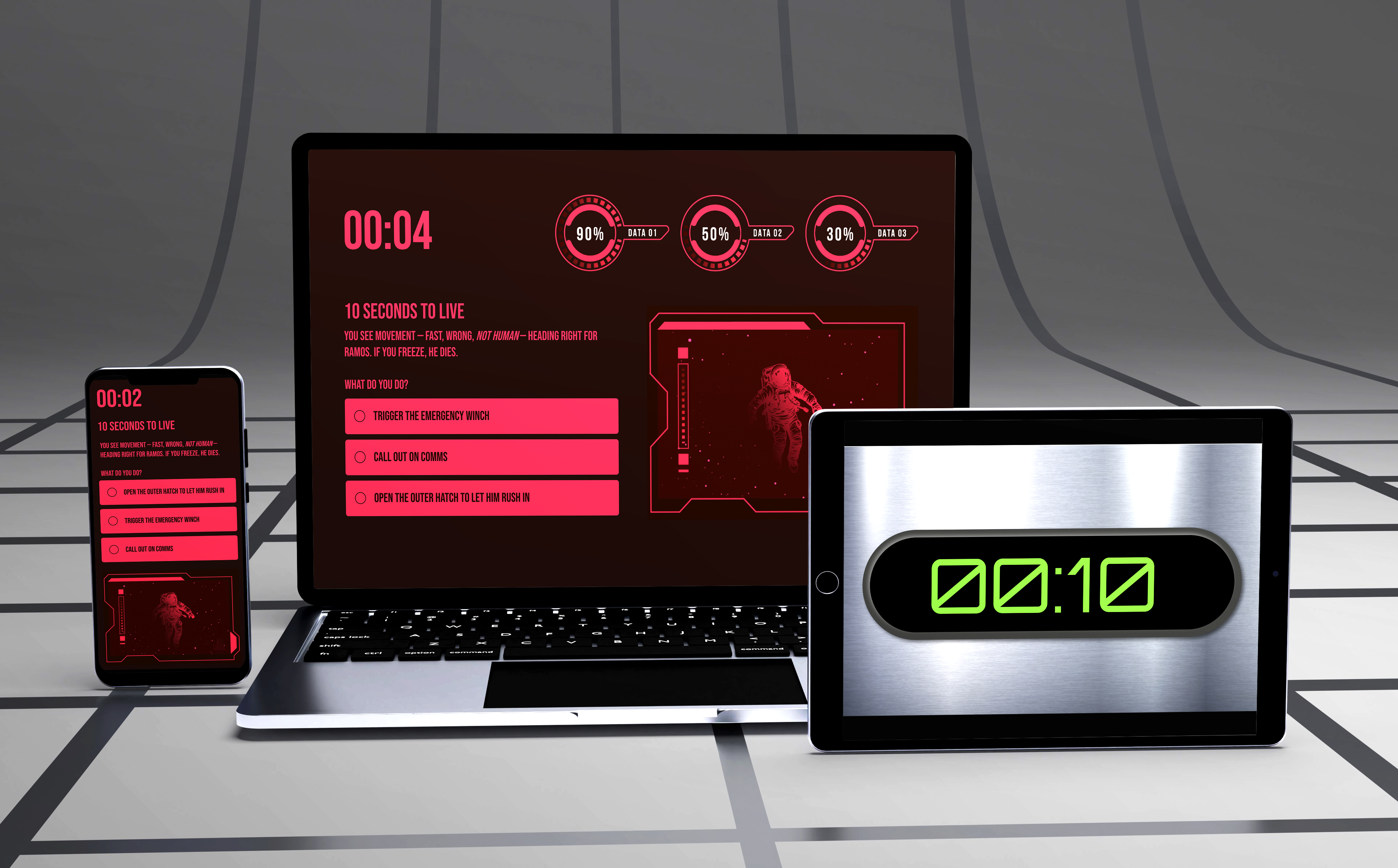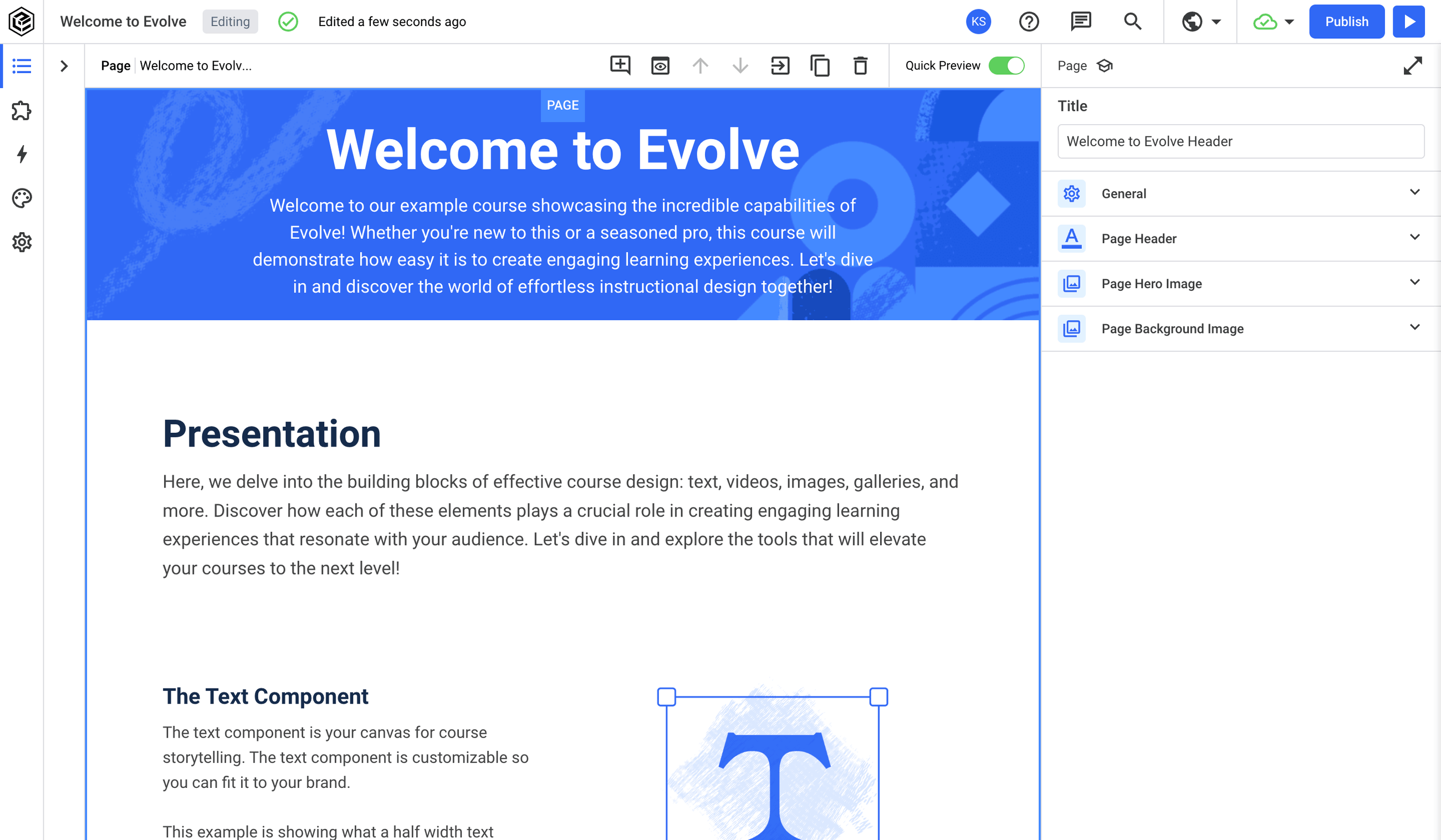In workplace training, decision-making often happens under pressure. Whether it’s responding to a customer issue, spotting fraudulent behaviour, or handling a time-sensitive safety concern, learners need more than just knowledge. They need to be able to act quickly and confidently.
This was the goal behind building a logic-based countdown timer in Evolve: to create an interaction that mirrors how decisions play out in the real world.
Why Use a Timer in Learning?
Timers can be polarising in eLearning. When used without purpose, they can feel stressful or unnecessary. But in the proper context, they can be a powerful way to simulate authentic workplace challenges where quick thinking is essential.
For example, in a financial compliance course, you might give learners just a few seconds to spot a suspicious transaction before it is processed. In customer service training, a timer can simulate the pressure of responding to an unhappy customer in real time. In emergency response training, learners can be challenged to make fast, life-saving decisions under strict time limits. In a health and safety scenario, you could ask learners to make a rapid decision about whether a site is safe to enter.
The countdown timer I built is designed to support scenarios where time is part of the skill:
- Identifying a counterfeit banknote during a cash transaction
- Responding quickly to a customer complaint
- Making a rapid judgment call in a safety-critical situation
By building time pressure into these types of interactions, you help learners practise staying focused and confident under realistic conditions.
How It Was Built
The timer was built entirely using Evolve’s built-in logic features without the need for external scripts or code.
It includes:
- A numeric variable to track time
- A looping logic structure that counts down from a set point in seconds or minutes
- Logic triggers that activate specific outcomes when time runs out
- Design elements that can be customised for any learning scenario using Evolve’s powerful theming options
To keep the interaction inclusive, I also added a simple opt-out feature. Learners can choose to skip the timer and continue without time pressure. This allows for a more flexible experience while still giving designers a way to simulate urgency when it makes sense.

Why Not Just Use a Built-In Timer?
Some Evolve components, such as branching scenarios, offer a basic built-in timer. These work well in many cases, but using a logic-based approach gives you much greater flexibility in terms of visual styling and behaviour.
By building the timer from the ground up, I was able to customise the countdown display, control exactly when and how it appears, and match the design to the rest of the course. This approach also makes it easier to layer in logic, such as opt-out options, different paths based on time left, or variations in feedback.
{{unlock-the-power-of-visual-design-in-elearning}}
Final Thoughts
This timer started as a simple experiment, but it opened up new ways to think about designing for realism in eLearning. When used thoughtfully, time pressure can deepen engagement and bring scenarios closer to the real-world challenges learners face every day.
{{intellum-evolve-free-trial}}
Try It in Your Own Content
A complete tutorial to create a timer in Evolve is available now on the Arck Learning YouTube channel. It walks through how the timer was built using native Evolve components and shows how to customise it for different use cases.
If you would like the course file with all the logic and theming already in place, feel free to get in touch with me at craig@arcklearning.com. I’m happy to share both the version that works with seconds and a newer version adapted to work with minutes.





.png)

